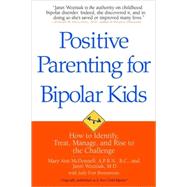
| Preface | p. ix |
| Acknowledgments | p. xiii |
| Lost in the Maze | p. 1 |
| Diagnosis Tangle: Is it Really-Or Only-Bipolar? | p. 13 |
| Spinning Star: What Bipolar Disorder Looks Like in Kids | p. 42 |
| The Whose-Fault Pitfall: What Causes Bipolar Disorder? | p. 67 |
| Sound Barrier: How To Talk so Your Doctor Will Hear | p. 91 |
| Hidden Allies: Finding the Right People For Your Child's Treatment Team | p. 122 |
| Treatment Twists and Turns: Finding The Best Treatment for Your Child | p. 141 |
| Doors And Detours: Finding Psychotherapy That Helps | p. 196 |
| Invisible Elephants: Education, Advocacy, and Ieps | p. 212 |
| Defending The Castle: Strategies for Thriving | p. 249 |
| Shock Wave: Coping With Danger and Crisis | p. 282 |
| Bibliography | p. 312 |
| Appendices | p. 318 |
| About the Authors | p. 348 |
| Index | p. 349 |
| Table of Contents provided by Ingram. All Rights Reserved. |
The New copy of this book will include any supplemental materials advertised. Please check the title of the book to determine if it should include any access cards, study guides, lab manuals, CDs, etc.
The Used, Rental and eBook copies of this book are not guaranteed to include any supplemental materials. Typically, only the book itself is included. This is true even if the title states it includes any access cards, study guides, lab manuals, CDs, etc.
Excerpted from Is Your Child Bipolar?: The Definitive Resource on How to Identify, Treat, and Thrive with a Bipolar Child by Mary Ann McDonnell, Janet Wozniak
All rights reserved by the original copyright owners. Excerpts are provided for display purposes only and may not be reproduced, reprinted or distributed without the written permission of the publisher.